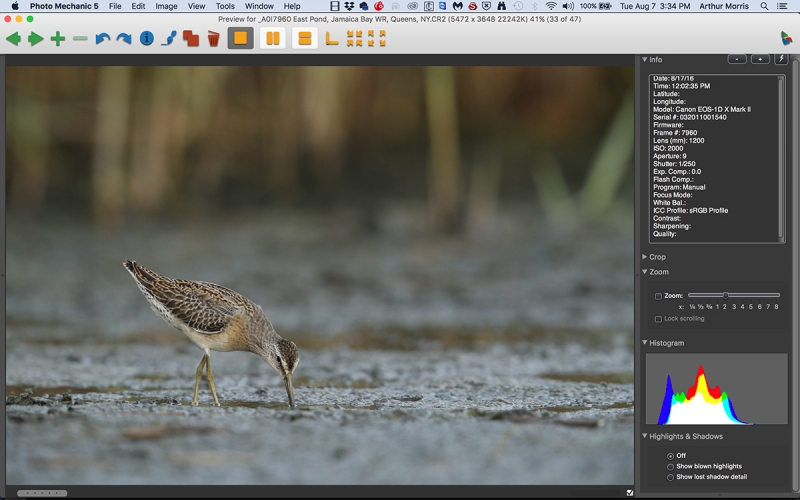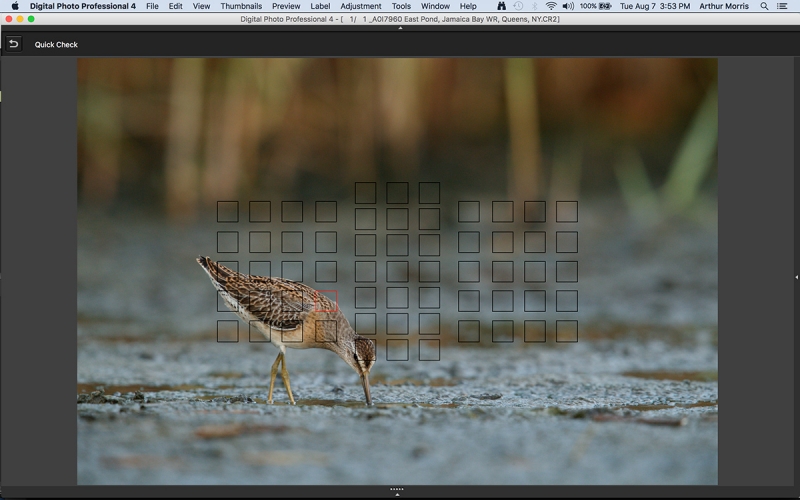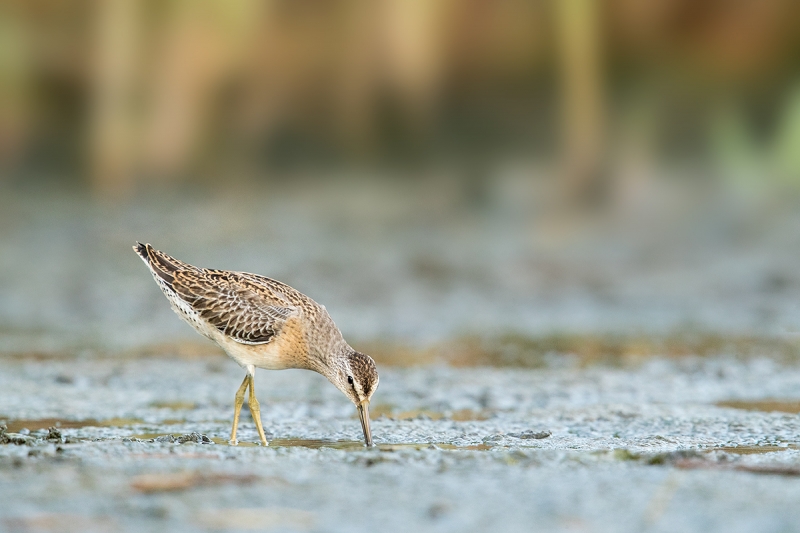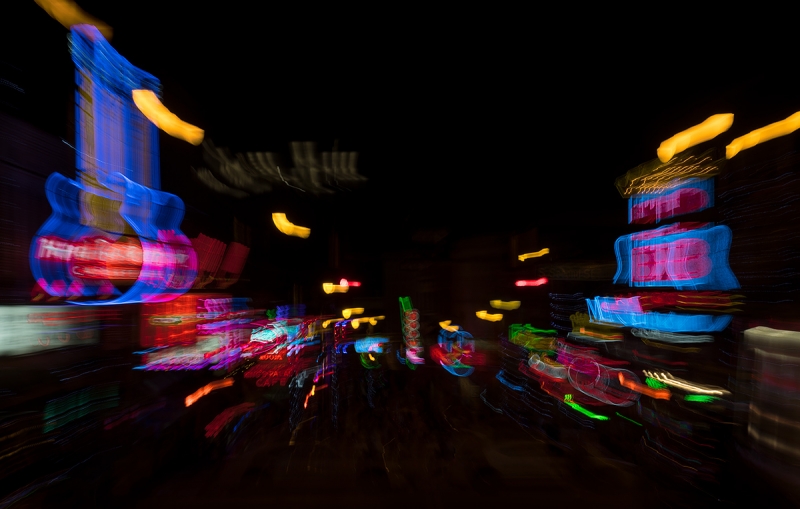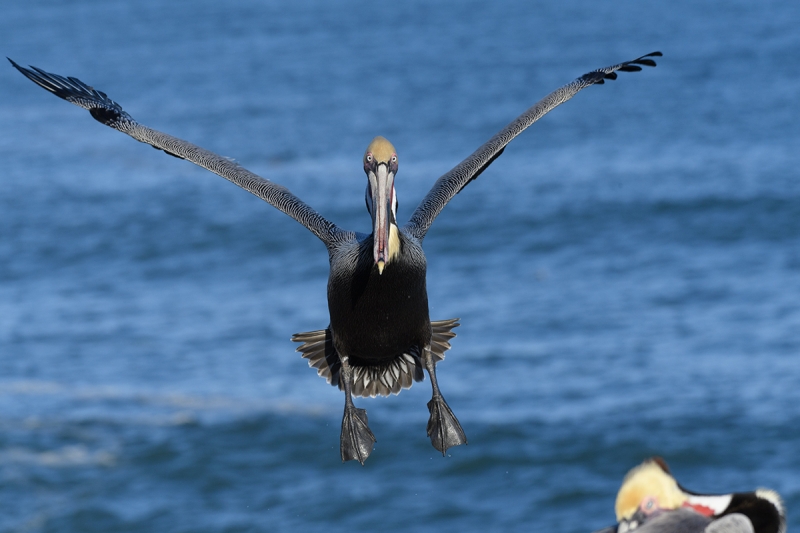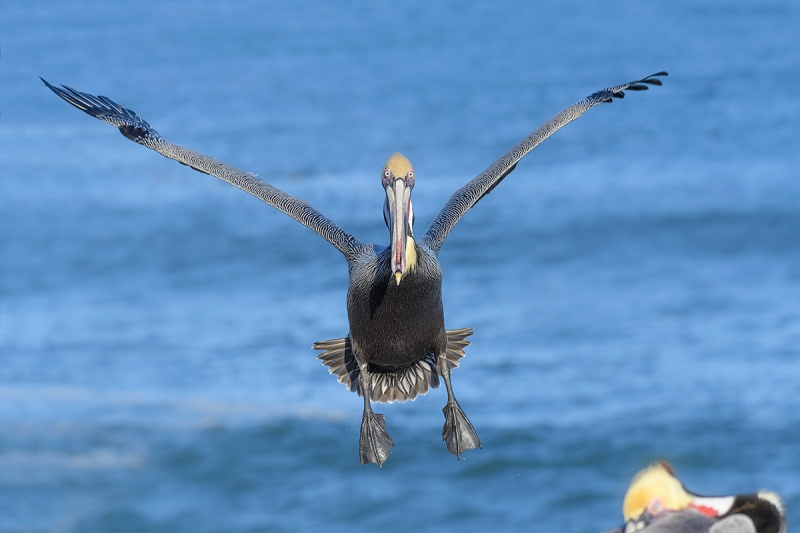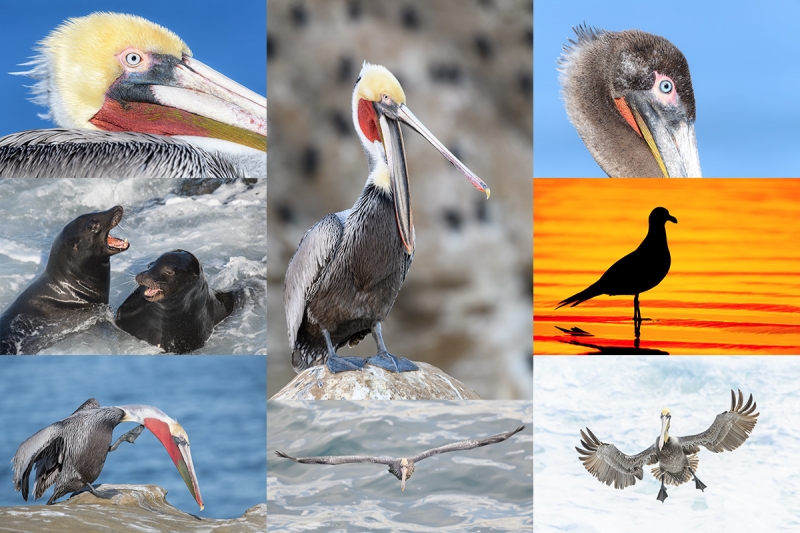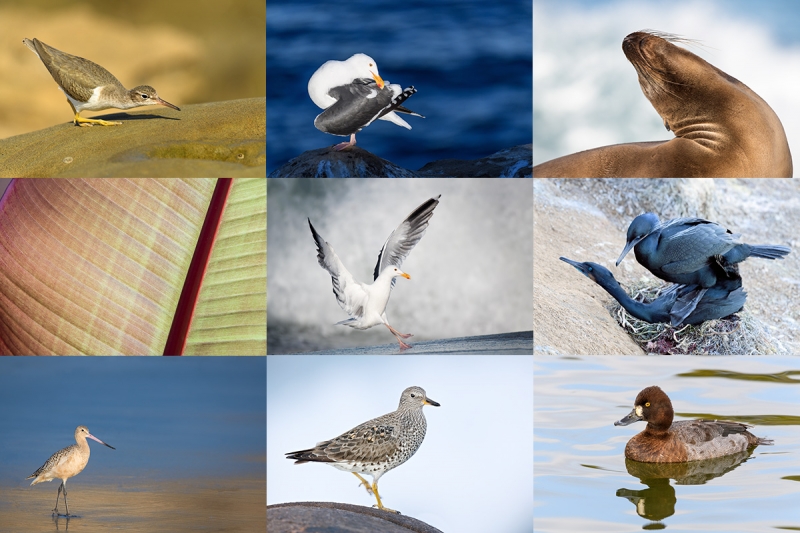August 8th, 2018 Stuff
On Tuesday I tied up a lot of loose ends having to do with my Norwegian adventure and the UK Gannets and Puffins pre-trip. I will be announcing the dates for the 2019 UK Gannets and Puffins and Red Kites IPT very soon.
Long Island Small Group Instruction
I will be returning to my old haunts on Long Island from 15-27 August, prime time for bird photography. If you would like to learn to get close to shorebirds in the mud, do consider joining me.
Shorebird Sessions
Join me at the East Pond at Jamaica Bay WR (JBWR) on the ideal tides to photograph southbound migrant juvenile shorebirds. With full frame bodies, a minimum of a 500mm lens with TCs is recommended. 400mm is OK with crop factor bodies and a 1.4X TC.
Important note: The Shorebird Mornings are dependent on suitable water levels at the East Pond. If the pond is flooded, the sessions will be conducted at Nickerson Beach where we will likely encounter some shorebirds as well as the skimmer and terns.
JBWR Shorebird Morning: Friday, AUG 24, 2018. 6:00 – 9:30am plus a working brunch: $375/session. Limit 4/Openings 3.
JBWR Shorebird Morning: Saturday, AUG 25, 2018. 6:00 – 9:30am plus a working brunch: $375/session. Limit 4/Openings 3.
Please inquire via e-mail for multiple session discounts.
To register, please call Jim or Jen with your credit card in hand: 863-692-0906. I hope that you can join me.
BIRDS AS ART
BIRDS AS ART is registered in the U.S. Patent and Trademark Office.


Selling Your Used Photo Gear Through BIRDS AS ART
Selling your used (or like-new) photo gear through the BAA Blog is a great idea. We charge only a 5% commission. One of the more popular used gear for sale sites charged a minimum of 20%. Plus assorted fees! Yikes. They went out of business. And e-Bay fees are now up to 13%. The minimum item price here is $500 (or less for a $25 fee). If you are interested please scroll down here or shoot us an e-mail with the words Items for Sale Info Request cut and pasted into the Subject line :). Stuff that is priced fairly — I offer pricing advice to those who agree to the terms — usually sells in no time flat. Over the past year, we have sold many dozens of items. Do know that prices on some items like the EOS-1D Mark IV, the old Canon 100-400, the old 500mm, the EOS-7D and 7D Mark II and the original 400mm DO lens have been dropping steadily. You can always see the current listings by clicking on the Used Photo Gear tab on the orange-yellow menu bar near the top of each blog post page.
Recent Sales
IPT veteran Bill Wingfield sold a Wimberley V-2 WH-200 Gimbal Head in very good condition for a ridiculously low $299.00 and a Gitzo GT3532LS Carbon Fiber tripod in good condition for only $249.00, both in early August.
IPT veteran Bill Wingfield sold his Canon EF 70-200mm f/2.8 L IS II USM lens in excellent to near-mint condition for $1049.00 in late July 2018.
Pierre Williot sold his Canon EOS 5DS R in like-new condition for the BAA record-low-by-far price of $1999.00 (was $2399.00).
Carolyn Peterson sold a Canon GPS receiver GP-E2 for EOS camera bodies in near-mint condition for $149 in mid-July.
BAA-friend “Bug” Bob Allen sold a Canon EF 100-400mm f/4.5-5.6L IS USM Zoom lens in excellent condition for the a BAA record low price of $527.00 in mid-July.
NANPA President Don Carter sold his Canon EF 70-200mm f/4L IS USM lens in excellent condition for the BAA record-low-by-far price of $525 the first day it was listed. Yours truly sold his like-new Canon 70-200mm f/4L IS lens for $699 in late June.
Ray Maynard sold his Canon 300mm f/2.8 L IS lens (the original version) in near-mint condition for the BIRDS AS ART record-low price of $2349.000 and a Canon 2X III teleconverter in near-mint condition for $285.00 both in mid-July.
Unsolicited, via e-mail, from Pierre Williot
I would encourage anyone who wants to sell some of their photographic equipment to contact Art. High-end photographic equipment can be difficult to sell. Art, with is widely read daily posts, will allow you to sell your equipment fairly easily for a reasonable price and commission. Please, seriously consider the price that he suggests as <em>it can be hard to face the reality of the actual value of well loved equipment! Art is well aware of the current market for second-hand photographic equipment.
Money Saving Reminder
If you need a hot photo item that is out of stock at B&H, would enjoy free overnight shipping, and would like a $50 discount on your first purchase, click here to order and enter the coupon code BIRDSASART at checkout. If you are looking to strike a deal on Canon or Nikon gear (including the big telephotos) or on a multiple item order, contact Steve Elkins via e-mail or on his cell at (479) 381-2592 (Eastern time) and be sure to mention your BIRDSASART coupon code and use it for your online order. Patrick Sparkman saved $350 on a recent purchase!
Hard to Find Nikon Stuff Available Now
Steve Elkins has several Nikon D850s in stock right now. In addition, he has a Nikon AF-S NIKKOR 600mm f/4E FL ED VR lens and an AF-S 180-400mm f/4E TC1.4 FL ED VR lens in stock! E-mail Steve about a special deal on either big Nikon lens. The 180-400, like its Canon counterpart, the EF 200-400mm f/4L IS USM with Internal Extender 1.4x lens — is especially great for trips to Africa, the Southern Ocean, or the Galapagos.
Booking.Com
Several folks on the UK IPT used the Booking.Com link below for there Edinburgh hotels, got great rates, and saved a handsome $25.00 in the process. If you too would like to give Booking.Com a shot, click here and to earn a $25 reward on your first booking. Thanks to the many who have already tried and used this great service.
Gear Questions and Advice
Too many folks attending BAA IPTs and dozens of photographers whom I see in the field and on BPN, are–out of ignorance–using the wrong gear especially when it comes to tripods and more especially, tripod heads… Please know that I am always glad to answer your gear questions via e-mail. Those questions might deal with systems, camera bodies, accessories, and/or lens choices and decisions.
|
|
|
This image was created at Jamaica Bay Wildlife Refuge on August 17, 2017 with the Induro GIT 304L/Mongoose M3.6-mounted Canon EF 600mm f/4L IS II USM lens, the Canon Extender EF 2X III, and the Canon EOS-1D X Mark II. ISO 2000. Evaluative metering at zero: 1/250 sec. at f/9 in Manual mode. AWB at 8:18am on a cloudy dark morning.
One row down and two to the left of the center AF point/AI Servo (C in Nikon)/Shutter button/Expand AF was active at the moment of exposure. The selected AF point was on the bird’s back.
AF micro-adjustment: fine-tune: +5. See the The LensAlign/FocusTune Micro-Adjusting Tutorial e-Guide here.
Image #1: Photo Mechanic screen capture: original Short-billed Dowitcher juvenile, underexposed original
|
The Under-exposed Original
At times, it might be the best strategy to intentionally under-expose an image while maintaining a fast-enough shutter speed and opting not to set a higher ISO. As I likely did with the image above. Images created from the last several generations of digital camera bodies allow us to open up too-dark RAW files with success and without too, too much noise. The 5D IV is the best of the lot with Canon, and the Nikon D850 is even better.
|
|
Image #2: DPP 4 screen capture: original Short-billed Dowitcher juvenile, showing the selected AF point
|
A Big AF-with-TCs Edge to Canon …
As noted here before, my personal experience is that the Nikon 600 with both the TC-E14 and the TC-E17 (the 1.4X and 1.7 X TCs) as well as the 80-400 VR and the 200-500 f/5.6, both with the TC-E14, have lots of problems focusing in low light with any AF point away from the center. With the 600 and the 2X you are practically limited to the center AF point and perhaps one beyond that. With the other combinations mentioned the farther from the center AF point you venture the more problems you may run into. The Nikon reps at the Memphis EXPO explained that these problems have to do with the number and position of cross-type AF points. With the Nikon 300 an 400mm f/2.8s such problems would likely not be a problem at all. Most importantly, note that with the Canon 500s and 600s, with the 400 DO lenses, and with both 100-400 IIs, similar problems occur only rarely and then only in extreme low light/low contrast situations.
On my upcoming Long Island Visit my plan is to stick with the 600/1.4X TC with the D850 and rely on cropping while taking advantage of the superb image quality of sharp D850 files. I will bring the 1.7X and 2X TCs along and plan to further experiment with those with the 600.
Lastly, note that the use of the 1.7X or the 2X TCs with either the Nikon 80-400 or 200-500 is not recommended as you lose AF. And the same goes for using a 2XTC with the Canon 100-400s. If you are working on a tripod with a totally still subject you can get decent results with any of those combinations either by focusing manually or using Live View and focusing via contrast off the sensor.
|
|
Image #3: The optimized image: original Short-billed Dowitcher in fresh juvenal plumage
|
The Optimized Image
I lightened this image considerably during the RAW conversion without moving the Shadow slider at all. Contrast was increased just a bit; this is something that I do with less then one out of 100 images. In Photoshop I did a bit of mud clean-up using the Patch Tool, the Spot Healing Brush, and Content Aware Fill. For the most part I eliminated some dark or black spots or areas. Lastly I applied a 65 pixel Gaussian Blur and added a Hide-all (Inverse or Black) Mask. I painted the effect in at 100% across the top of the frame to soften the BKGR especially the too-well defined reeds in the upper right. Then I painting in the effect with a 33% Opacity brush across the middle of the image. I finished by raising the Opacity to 66% and painting the effect in on the out-of-focus ridge at the very bottom of the frame. With the latter two I made absolutely sure that I stayed away from the bird … Then a relatively small crop.
No NeatImage noise reduction was needed.
The Lesson
With the latest generations of digital camera bodies it is possible to open up (lighten) under-exposed images considerably while maintaining decent image quality. It is however, almost always best to expose to the right.
|
|
The BIRDS AS ART Current Workflow e-Guide (Digital Basics II).
You can order your copy from the BAA Online Store here, by sending a Paypal for $40 here, or by calling Jim or Jennifer weekdays at 863-692-0906 with your credit card in hand.
|
The BIRDS AS ART Current Workflow e-Guide (Digital Basics II)
Your guessed it, everything mentioned above and tons more is covered in detail in the BIRDS AS ART Current Workflow e-Guide (Digital Basics II), an instructional PDF that is sent via e-mail. Learn more and check out the free excerpt in the blog post here. While the new e-Guide reflects my Macbook Pro/Photo Mechanic/DPP 4/Photoshop workflow, folks using a PC and/or BreezeBrowser will also benefit greatly by studying the material on DB II. Do note that you will find the RGB Curves Adjustment Color Balancing tutorial only in the new e-guide. Note: folks working on a PC and/or those who do not want to miss anything Photoshop may wish to purchase the original Digital Basics along with DB II while saving $15 by clicking here to buy the DB Bundle.
The two most recent and many of the older MP4 Photoshop Tutorial videos releases go hand and hand with the information in DB II):
- The Wingtip Repairs MP4 Video here.
- The MP4 Crow Cleanup Video here.
Folks who learn well by following along rather than by reading can check out the complete collection of MP 4 Photoshop Tutorial Videos by clicking here.
Though I have become more proficient converting my Nikon RAW (NEF) files in Adobe Camera Raw, I continue to optimize my Canon image in DPP 4. You can learn how and why I converted (and still convert) nearly all of my Canon digital RAW files in DPP 4 in the DPP 4 RAW Conversion Guide here. And, yes, I still have many Canon images to work on. 🙂 The RAW conversions for all three of today’s featured images was straightforward once I entered my camera/ISO specific recipes (as detailed in the DPP 4 RAW Conversion Guide). You can learn advanced Quick Masking and advanced Layer Masking techniques in APTATS I & II. You can save $15 by purchasing the pair. Folks can learn sophisticated sharpening and (NeatImage) Noise Reduction techniques in the The Professional Post Processing Guide by Arash Hazeghi and yours truly.
Help Support the Blog
Please help support my efforts here on the blog by remembering to click on the logo link above each time that you shop Amazon. That would be greatly appreciated. There is no problem using your Prime account; just click on the link and log into your Prime account. With love, artie
If In Doubt …
If in doubt about using the BAA B&H affiliate link correctly, you can always start your search by clicking here. Please note that the tracking is invisible. Web orders only. Please, however, remember to shoot me your receipt via e-mail.




Please Remember to use my Affiliate Links and to Visit the New BAA Online Store 🙂
To show your appreciation for my continuing efforts here, we ask, as always, that you get in the habit of using my B&H affiliate links on the right side of the blog for all of your photo and electronics purchases. Please check the availability of all photographic accessories in the New BIRDS AS ART Online Store, especially the Mongoose M3.6 tripod head, Wimberley lens plates, Delkin flash cards and accessories, and LensCoat stuff.
As always, we sell only what I have used, have tested, and can depend on. We will not sell you junk. We know what you need to make creating great images easy and fun. And please remember that I am always glad to answer your gear questions via e-mail.
I would of course appreciate your using our B&H affiliate links for all of your major gear, video, and electronic purchases. For the photographic stuff mentioned in the paragraph above, and for everything else in the new store, we, meaning BAA, would of course greatly appreciate your business. Here is a huge thank you to the many who have been using our links on a regular basis and those who will be visiting the New BIRDS AS ART Online Store as well.
Facebook
Be sure to like and follow BAA on Facebook by clicking on the logo link upper right. Tanks a stack.
Typos
In all blog posts and Bulletins, feel free to e-mail or to leave a comment regarding any typos or errors. Just be right :).
August 6th, 2018 Stuff
My keynote at the Memphis Expo early on Saturday evening was very well received. Everything went off smoothly and the images looked great on the large screen in the theater at the Graceland guest house. I felt really connected to the audience so I slowed down halfway through and really enjoyed things. I did a podcast right before the program; one of the two hosts asked me, “What three things will you be teaching them about bird photogrpahy?” I answered, “My program is more about life than about photography.”
You can check out Amy’s take on Memphis in her blog post here.
All in all the folks at Bedford put on quite a show. As I mentioned in the last blog post, the keynote line-up was very strong. I was proud to be involved and hope to do a second event with them in OKC this coming March.
Long Island Small Group Instruction
I will be returning to my old haunts on Long Island from 15-27 August, prime time for bird photography. The schedules below may be expanded based on demand.
Skimmer Sessions/New Expanded Scehdule
Join me at Nickerson Beach to photograph Black Skimmers and lots more. Gull predation of young skimmers is likely. With full frame bodies, a minimum of a 500mm lens with TCs is recommended. 400mm OK with crop factor bodies.
Skimmer Morning: Thursday, AUG 16, 2018. 5:30 – 9:00am plus a working brunch: $375/session. Limit 4/Openings 3.
Skimmer Morning: Friday AUG, 17, 2018. 5:30 – 9:00am plus a working brunch: $375/session. Limit 4/Openings 3.
Skimmer Morning: Wednesday, AUG, 22, 2018. 5:30 – 9:00am plus a working brunch: $375/session. Limit 4.
Skimmer Afternoon (usually best for flight): Thursday, AUG 16, 2018. 5:00pm till sunset: $250/session. Limit 4.
Skimmer Afternoon (usually best for flight): Friday, AUG 17, 2018. 5:00pm till sunset: $250/session. Limit 4/Openings 3.
Skimmer Afternoon (usually best for flight): Tuesday AUG 21, 2018. 5:00pm till sunset: $250/session. Limit 4/Openings 3.
Skimmer Afternoon (usually best for flight): Wednesday AUG 22, 2018. 5:00pm till sunset: $250/session. Limit 4/Openings 3.
Please inquire e-mail for multiple session discounts.
To register, please call Jim or Jen with your credit card in hand: 863-692-0906. I hope that you can join me.
Shorebird Sessions
Join me at the East Pond at Jamaica Bay WR on the ideal tides to photograph southbound migrant juvenile shorebirds. With full frame bodies, a minimum of a 500mm lens with TCs is recommended. 400mm OK with crop factor bodies.
Important note: The Shorebird Mornings are dependent on suitable water levels at the East Pond. If the pond is flooded, the sessions will be conducted at Nickerson Beach.
JBWR Shorebird Morning: Friday, AUG 24, 2018. 6:00 – 9:30am plus a working brunch: $375/session. Limit 4/Openings 3.
JBWR Shorebird Morning: Saturday, AUG 25, 2018. 6:00 – 9:30am plus a working brunch: $375/session. Limit 4/Openings 3.
Please inquire via e-mail for multiple session discounts.
To register, please call Jim or Jen with your credit card in hand: 863-692-0906. I hope that you can join me.
BIRDS AS ART
BIRDS AS ART is registered in the U.S. Patent and Trademark Office.


Selling Your Used Photo Gear Through BIRDS AS ART
Selling your used (or like-new) photo gear through the BAA Blog is a great idea. We charge only a 5% commission. One of the more popular used gear for sale sites charged a minimum of 20%. Plus assorted fees! Yikes. They went out of business. And e-Bay fees are now up to 13%. The minimum item price here is $500 (or less for a $25 fee). If you are interested please scroll down here or shoot us an e-mail with the words Items for Sale Info Request cut and pasted into the Subject line :). Stuff that is priced fairly — I offer pricing advice to those who agree to the terms — usually sells in no time flat. Over the past year, we have sold many dozens of items. Do know that prices on some items like the EOS-1D Mark IV, the old Canon 100-400, the old 500mm, the EOS-7D and 7D Mark II and the original 400mm DO lens have been dropping steadily. You can always see the current listings by clicking on the Used Photo Gear tab on the orange-yellow menu bar near the top of each blog post page.
Recent Sales
IPT veteran Bill Wingfield sold a Wimberley V-2 WH-200 Gimbal Head in very good condition for a ridiculously low $299.00 and a Gitzo GT3532LS Carbon Fiber tripod in good condition for only $249.00, bot in early August.
IPT veteran Bill Wingfield sold his Canon EF 70-200mm f/2.8 L IS II USM lens in excellent to near-mint condition for $1049.00 in late July 2018.
Pierre Williot sold his Canon EOS 5DS R in like-new condition for the BAA record-low-by-far price of $1999.00 (was $2399.00).
Carolyn Peterson sold a Canon GPS receiver GP-E2 for EOS camera bodies in near-mint condition for $149 in mid-July.
BAA-friend “Bug” Bob Allen sold a Canon EF 100-400mm f/4.5-5.6L IS USM Zoom lens in excellent condition for the a BAA record low price of $527.00 in mid-July.
NANPA President Don Carter sold his Canon EF 70-200mm f/4L IS USM lens in excellent condition for the BAA record-low-by-far price of $525 the first day it was listed. Yours truly sold his like-new Canon 70-200mm f/4L IS lens for $699 in late June.
Ray Maynard sold his Canon 300mm f/2.8 L IS lens (the original version) in near-mint condition for the BIRDS AS ART record-low price of $2349.000 and a Canon 2X III teleconverter in near-mint condition for $285.00 both in mid-July.
Unsolicited, via e-mail, from Pierre Williot
I would encourage anyone who wants to sell some of their photographic equipment to contact Art. High-end photographic equipment can be difficult to sell. Art, with is widely read daily posts, will allow you to sell your equipment fairly easily for a reasonable price and commission. Please, seriously consider the price that he suggests as <em>it can be hard to face the reality of the actual value of well loved equipment! Art is well aware of the current market for second-hand photographic equipment.
New Listings
Canon EF 500mm f/4L IS USM Lens
Todd Koudelka is offering a Canon EF 500mm f/4L IS USM lens (“the “old five”) in very good plus condition for the BAA record-low price of $3199.00. The lens which -functions perfectly — would be excellent but for the fact that Todd used camo tape rather than a LensCoat and when he removed the tape he pulled off some paint. He did paint over the area with the correct Canon paint. The sale includes the lens trunk with key, the rear cap, the front lens cover, the lens strap, and insured ground shipping via major courier to US addresses. Your item will not ship until your check clears unless other arrangements are made.
Please contact Todd e-mail or by phone at 1-608-577-5375 — 7:00- 9:00 Central time only.
The 500mm f/4 lenses have been the world’s most popular telephoto lenses for birds, nature, wildlife, and sports for many decades. I owned and used and loved my “old five” for many years. If you don’t have the cash for a 500 II and can handle the additional 1 1/2 pounds, then this is your best super-telephoto option. Most everyone can produce sharp images with this lens and a 1.4X TC. Folks with good to excellent sharpness techniques can do the same with a 2X TC. With the new 500 II selling for $8,999 you can save a bundle by grabbing Todd’s lens at this record-low BAA price. artie
Money Saving Reminder
If you need a hot photo item that is out of stock at B&H, would enjoy free overnight shipping, and would like a $50 discount on your first purchase, click here to order and enter the coupon code BIRDSASART at checkout. If you are looking to strike a deal on Canon or Nikon gear (including the big telephotos) or on a multiple item order, contact Steve Elkins via e-mail or on his cell at (479) 381-2592 (Eastern time) and be sure to mention your BIRDSASART coupon code and use it for your online order. Patrick Sparkman saved $350 on a recent purchase!
Hard to Find Nikon Stuff Available Now
Steve Elkins has several Nikon D850s in stock right now. In addition, he just received a Nikkor AF-S 180-400mm f/4E TC1.4 FL ED VR Lens! E-mail Steve about a special deal on the big Nikon zoom lens that — like its Canon counterpart, the EF 200-400mm f/4L IS USM with Internal Extender 1.4x lens — is especially great for trips to Africa, the Southern Ocean, or the Galapagos.
Booking.Com
Several folks on the UK IPT used the Booking.Com link below for there Edinburgh hotels, got great rates, and saved a handsome $25.00 in the process. If you too would like to give Booking.Com a shot, click here and to earn a $25 reward on your first booking. Thanks to the many who have already tried and used this great service.
Gear Questions and Advice
Too many folks attending BAA IPTs and dozens of photographers whom I see in the field and on BPN, are–out of ignorance–using the wrong gear especially when it comes to tripods and more especially, tripod heads… Please know that I am always glad to answer your gear questions via e-mail. Those questions might deal with systems, camera bodies, accessories, and/or lens choices and decisions.
|
|
|
This image was created on an informal Beale Street walk in Memphis, TN on the evening of Friday, August 3. I used the hand held Nikon AF-S NIKKOR 70-200mm f/4G ED VR lens (I started at 185mm and zoomed out) and the Nikon D5 (with Dual XQD slots). AUTO ISO set ISO 64. Matrix metering at ? as framed: 1 sec. at f/22 in S (Shutter priority) mode (Tv mode with Canon). NATURAL AUTO WB at 9:18pm on a clear evening.
Left of center d-72/Continuous (AI Servo in Canon)/Shutter button AF was active at the moment of exposure.
Focus peaking AF Fine-tune: +4. See the Nikon AF Fine-tune e-Guide here.
Image #1: Beale Street lighted signs at night
|
Magic Night Lights Trick!
I did not know much about Beale Street but I did expect lots of neon signs so in advance, my plan was to try to create some pleasing blurs. As I was helping a few folks out I suggested a simple method that I use often for birds: Auto ISO with S (Shutter priority) mode (Tv mode with Canon) and the shutter speed set somewhere between 1/4 and one full second. Then set the exposure compensation (EC) that you think based on your evaluation of the scene and the situation. Then make a test image or two and adjust your EC as needed.
So far, the above is pretty much old hat for experienced blur folks. But …
What EC?
What do you think might be a good EC for the scene above? Please explain why.
|
|
|
This image was also created on the informal Beale Street walk in Memphis, TN on the evening of Friday, August 3. I used the hand held Nikon AF-S NIKKOR 70-200mm f/4G ED VR lens (at 175mm) and the Nikon D5 (with Dual XQD slots). AUTO ISO set ISO 72. Matrix metering at ? as framed: 1/60 sec. at f/4 in S (Shutter priority) mode (Tv mode with Canon). NATURAL AUTO WB at 9:23pm on a clear evening.
Lower right d-25/Continuous (AI Servo in Canon)/Shutter button AF was active at the moment of exposure.
Focus peaking AF Fine-tune: +4. See the Nikon AF Fine-tune e-Guide here.
Image #2: Beale Street Hard Rock Cafe lighted sign at night
|
But ….
When I decided to make a sharp image of the Hard Rock Cafe, I simply increased the shutter speed from one full second to 1/60 sec. At one sixtieth I was pretty confident that I could create a sharp image with the 70-200 f/4 zoomed out a bit. And I did. I left the EC as I had set it for Image #1.The big surprise for me was that I wound up with such a low ISO.
The Lesson
The big lesson here is that by working in S (Tv) (mode with the correct EC) you can go from blurs to sharp simply by raising the shutter speed.
Help Support the Blog
Please help support my efforts here on the blog by remembering to click on the logo link above each time that you shop Amazon. That would be greatly appreciated. There is no problem using your Prime account; just click on the link and log into your Prime account. With love, artie
If In Doubt …
If in doubt about using the BAA B&H affiliate link correctly, you can always start your search by clicking here. Please note that the tracking is invisible. Web orders only. Please, however, remember to shoot me your receipt via e-mail.




Please Remember to use my Affiliate Links and to Visit the New BAA Online Store 🙂
To show your appreciation for my continuing efforts here, we ask, as always, that you get in the habit of using my B&H affiliate links on the right side of the blog for all of your photo and electronics purchases. Please check the availability of all photographic accessories in the New BIRDS AS ART Online Store, especially the Mongoose M3.6 tripod head, Wimberley lens plates, Delkin flash cards and accessories, and LensCoat stuff.
As always, we sell only what I have used, have tested, and can depend on. We will not sell you junk. We know what you need to make creating great images easy and fun. And please remember that I am always glad to answer your gear questions via e-mail.
I would of course appreciate your using our B&H affiliate links for all of your major gear, video, and electronic purchases. For the photographic stuff mentioned in the paragraph above, and for everything else in the new store, we, meaning BAA, would of course greatly appreciate your business. Here is a huge thank you to the many who have been using our links on a regular basis and those who will be visiting the New BIRDS AS ART Online Store as well.
Facebook
Be sure to like and follow BAA on Facebook by clicking on the logo link upper right. Tanks a stack.
Typos
In all blog posts and Bulletins, feel free to e-mail or to leave a comment regarding any typos or errors. Just be right :).
August 4th, 2018 Stuff
The first day of the Memphis EXPO was great. I particularly enjoyed two presentations. The first was by Patrick Murphy-Racey, an eclectic, independent digital journalist who loves to photograph sports and weddings and travel and people, ad lots more. The second was by the super-hip, super-creative fashion photographer Lindsay Adler. Though neither of them photographs nature let alone birds, I found their programs enlightening, entertaining, and informative. Each of them blew me away with their creativity and passion. I had a great time connecting with Patrick after his program and it was wonderful seeing Lindsay again. I had not seen her for seventeen years when she was a NANPA high school scholarship student and I was an instructor. In addition, it was great seeing old Anchorage, AK-friend Steve Freno and his two adopted daughters.
My afternoon Photoshop program went well. On Friday evening a small group of us went to Beale Street for dinner and some street photography; we had a blast. My EXPO-closing keynote is at 5pm on Saturday. Huge thanks to the folks at Bedford’s Camera — John Rose, Steve Elkins, Jeff Beauchamp, and Jason Beford — for sponsoring my appearance here in Memphis.
Long Island Small Group Instruction
I will be returning to my old haunts on Long Island from 15-27 August, prime time for bird photography. The schedules below may be expanded based on demand.
Skimmer Sessions/New Expanded Scehdule
Join me at Nickerson Beach to photograph Black Skimmers and lots more. Gull predation of young skimmers is likely. With full frame bodies, a minimum of a 500mm lens with TCs is recommended. 400mm OK with crop factor bodies.
Skimmer Morning: Thursday, AUG 16, 2018. 5:30 – 9:00am plus a working brunch: $375/session. Limit 4/Openings 3.
Skimmer Morning: Friday AUG, 17, 2018. 5:30 – 9:00am plus a working brunch: $375/session. Limit 4/Openings 3.
Skimmer Morning: Wednesday, AUG, 22, 2018. 5:30 – 9:00am plus a working brunch: $375/session. Limit 4.
Skimmer Afternoon (usually best for flight): Thursday, AUG 16, 2018. 5:00pm till sunset: $250/session. Limit 4.
Skimmer Afternoon (usually best for flight): Friday, AUG 17, 2018. 5:00pm till sunset: $250/session. Limit 4/Openings 3.
Skimmer Afternoon (usually best for flight): Tuesday AUG 21, 2018. 5:00pm till sunset: $250/session. Limit 4/Openings 3.
Skimmer Afternoon (usually best for flight): Wednesday AUG 22, 2018. 5:00pm till sunset: $250/session. Limit 4/Openings 3.
Please inquire e-mail for multiple session discounts.
To register, please call Jim or Jen with your credit card in hand: 863-692-0906. I hope that you can join me.
Shorebird Sessions
Join me at the East Pond at Jamaica Bay WR on the ideal tides to photograph southbound migrant juvenile shorebirds. With full frame bodies, a minimum of a 500mm lens with TCs is recommended. 400mm OK with crop factor bodies.
Important note: The Shorebird Mornings are dependent on suitable water levels at the East Pond. If the pond is flooded, the sessions will be conducted at Nickerson Beach.
JBWR Shorebird Morning: Friday, AUG 24, 2018. 6:00 – 9:30am plus a working brunch: $375/session. Limit 4/Openings 3.
JBWR Shorebird Morning: Saturday, AUG 25, 2018. 6:00 – 9:30am plus a working brunch: $375/session. Limit 4/Openings 3.
Please inquire via e-mail for multiple session discounts.
To register, please call Jim or Jen with your credit card in hand: 863-692-0906. I hope that you can join me.
BIRDS AS ART
BIRDS AS ART is registered in the U.S. Patent and Trademark Office.


Selling Your Used Photo Gear Through BIRDS AS ART
Selling your used (or like-new) photo gear through the BAA Blog is a great idea. We charge only a 5% commission. One of the more popular used gear for sale sites charged a minimum of 20%. Plus assorted fees! Yikes. They went out of business. And e-Bay fees are now up to 13%. The minimum item price here is $500 (or less for a $25 fee). If you are interested please scroll down here or shoot us an e-mail with the words Items for Sale Info Request cut and pasted into the Subject line :). Stuff that is priced fairly — I offer pricing advice to those who agree to the terms — usually sells in no time flat. Over the past year, we have sold many dozens of items. Do know that prices on some items like the EOS-1D Mark IV, the old Canon 100-400, the old 500mm, the EOS-7D and 7D Mark II and the original 400mm DO lens have been dropping steadily. You can always see the current listings by clicking on the Used Photo Gear tab on the orange-yellow menu bar near the top of each blog post page.
Recent Sales
IPT veteran Bill Wingfield sold his Canon EF 70-200mm f/2.8 L IS II USM lens in excellent to near-mint condition for $1049.00 in late July 2018.
Pierre Williot sold his Canon EOS 5DS R in like-new condition for the BAA record-low-by-far price of $1999.00 (was $2399.00).
Carolyn Peterson sold a Canon GPS receiver GP-E2 for EOS camera bodies in near-mint condition for $149 in mid-July.
BAA-friend “Bug” Bob Allen sold a Canon EF 100-400mm f/4.5-5.6L IS USM Zoom lens in excellent condition for the a BAA record low price of $527.00 in mid-July.
NANPA President Don Carter sold his Canon EF 70-200mm f/4L IS USM lens in excellent condition for the BAA record-low-by-far price of $525 the first day it was listed. Yours truly sold his like-new Canon 70-200mm f/4L IS lens for $699 in late June.
Ray Maynard sold his Canon 300mm f/2.8 L IS lens (the original version) in near-mint condition for the BIRDS AS ART record-low price of $2349.000 and a Canon 2X III teleconverter in near-mint condition for $285.00 both in mid-July.
Unsolicited, via e-mail, from Pierre Williot
I would encourage anyone who wants to sell some of their photographic equipment to contact Art. High-end photographic equipment can be difficult to sell. Art, with is widely read daily posts, will allow you to sell your equipment fairly easily for a reasonable price and commission. Please, seriously consider the price that he suggests as <em>it can be hard to face the reality of the actual value of well loved equipment! Art is well aware of the current market for second-hand photographic equipment.
|
|
|
This image was created on January 21, 2018 at La Jolla, CA with the hand held Nikon AF-S NIKKOR 200-500mm f/5.6E ED VR lens (at 500mm) and the blazingly fast professional digital camera body, the Nikon D5 DSLR camera body with dual XQD slots). ISO 800. Matrix metering probably -1/3 stop: 1/1600 sec. at f/9 in Manual mode. AUOT0 WB at 8:01am on sunny San Diego morning.
Group/Shutter Button AF. The array was on the bird’s breast just to our right of center, pretty much on the same plane as the pelican’s eye. Click on the image to enjoy a larger version.
Brown Pelican, Pacific race, incoming — this JPEG represents the RAW (NEF) file
|
What’s Your Plan?
The JPEG above represents the RAW (NEF) file as it came out of the camera. The image is (only a bit) under-exposed as I did not want to burn the WHITEs on the bird’s neck. The inclusion of just the right part of the pelican on the lower right was — to me — serendipitous. Would you leave it or lose it?
Before you scroll down to see the optimized version, think about what your goals would be during post processing.
|
|
|
This image was created on January 21, 2018 at La Jolla, CA with the hand held Nikon AF-S NIKKOR 200-500mm f/5.6E ED VR lens (at 500mm) and the blazingly fast professional digital camera body, the Nikon D5 DSLR camera body with dual XQD slots). ISO 800. Matrix metering probably -1/3 stop: 1/1600 sec. at f/9 in Manual mode. AUOT0 WB at 8:01am on sunny San Diego morning.
Group/Shutter Button AF. The array was on the bird’s breast just to our right of center, pretty much on the same plane as the pelican’s eye. Click on the image to enjoy a larger version.
Brown Pelican, Pacific race, incoming — this JPEG represents the optimized master file
|
The Image Optimization
I lightened the image during the RAW conversion in ACR. These were the settings: Exposure: +0.4; Contrast: -5; Highlights: 0; Shadows: +64; Whites: +22, Blacks; -21, Clarity -5; Vibrance: +9;and Saturation: 0. Once I brought the image into Photoshop the key to success of the image was adding canvas above and left where it was too tight. I using John Haedo Content Aware Fill to fill in the new canvas.
|
|
The BIRDS AS ART Current Workflow e-Guide (Digital Basics II).
You can order your copy from the BAA Online Store here, by sending a Paypal for $40 here, or by calling Jim or Jennifer weekdays at 863-692-0906 with your credit card in hand.
|
The BIRDS AS ART Current Workflow e-Guide (Digital Basics II)
Your guessed it, everything mentioned above and tons more is covered in detail in the BIRDS AS ART Current Workflow e-Guide (Digital Basics II), an instructional PDF that is sent via e-mail. Learn more and check out the free excerpt in the blog post here. While the new e-Guide reflects my Macbook Pro/Photo Mechanic/DPP 4/Photoshop workflow, folks using a PC and/or BreezeBrowser will also benefit greatly by studying the material on DB II. Do note that you will find the RGB Curves Adjustment Color Balancing tutorial only in the new e-guide. Note: folks working on a PC and/or those who do not want to miss anything Photoshop may wish to purchase the original Digital Basics along with DB II while saving $15 by clicking here to buy the DB Bundle.
The two most recent and many of the older MP4 Photoshop Tutorial videos releases go hand and hand with the information in DB II):
- The Wingtip Repairs MP4 Video here.
- The MP4 Crow Cleanup Video here.
Folks who learn well by following along rather than by reading can check out the complete collection of MP 4 Photoshop Tutorial Videos by clicking here.
Though I have become more proficient converting my Nikon RAW (NEF) files in Adobe Camera Raw, I continue to optimize my Canon image in DPP 4. You can learn how and why I converted (and still convert) nearly all of my Canon digital RAW files in DPP 4 in the DPP 4 RAW Conversion Guide here. And, yes, I still have many Canon images to work on. 🙂 The RAW conversions for all three of today’s featured images was straightforward once I entered my camera/ISO specific recipes (as detailed in the DPP 4 RAW Conversion Guide). You can learn advanced Quick Masking and advanced Layer Masking techniques in APTATS I & II. You can save $15 by purchasing the pair. Folks can learn sophisticated sharpening and (NeatImage) Noise Reduction techniques in the The Professional Post Processing Guide by Arash Hazeghi and yours truly.
|
|
|
San Diego offers a wealth of very attractive natural history subjects, including and especially the Pacific race of California Brown Pelican. With annual visits spanning more than four decades, I have lots of photographic experience there … Click on the composite to enjoy a larger version.
|
2019 San Diego 4 1/2-DAY BIRDS AS ART Instructional Photo-Tour (IPT) SUN JAN 20, 2019 thru and including the morning session on THURS JAN 24: 4 1/2 days: $2099.
(Limit: 10/Openings: 7)
Introductory Meet and Greet at 7:00pm on the evening before the IPT begins; SAT JAN 19, 2019.
Please see the Dancing Grebe Morning Add-On Info below
Join me in San Diego to photograph the spectacular breeding plumage Brown Pelicans with their fire-engine red and olive green bill pouches; Brandt’s (nesting with eggs and possibly chicks) and Double-crested Cormorants; breeding plumage Wood and Ring-necked Duck; other duck species possible including Lesser Scaup, Redhead, and Surf Scoter; a variety of gulls including Western, California, and the gorgeous Heermann’s, all in full breeding plumage; shorebirds including Marbled Godwit, Willet, Sanderling and Black-bellied Plover; many others are possible including Least, Western, and Spotted Sandpiper, Whimbrel, Black and Ruddy Turnstone, Semipalmated Plover, and Surfbird; Harbor Seals (depending on the current regulations) and California Sea Lions; and Bird of Paradise flowers. And as you can see by studying the IPT cards, there are some nice bird-scape and landscape opportunities as well. Not to mention a ton of excellent flight photography opportunities and instruction.
Please note: where permitted and on occasion, ducks and gulls will be attracted (or re-located) with offerings of grains and healthy breads.
Learning Exposure, Whether You Like It Or Not
Whether you like it or not, we will be beating the subject of exposure like a dead horse. In every new situation you will hear my thoughts on the exposure situation along with my thoughts on both Nikon and Canon histograms and the subject of blinkies. Whether you like it or not, you will learn to work in manual mode and to get the right exposure every time as long as a bird gives you ten seconds with the light constant.And you will learn what to do when the light is changing constantly. What you learn about exposure will be one of the great take-aways on every IPT.
|
|
|
Though the pelicans will be the stars of the show on this IPT, there will be many other handsome and captivating subjects in wonderful settings. Click on the composite to enjoy a larger version.
|
It Ain’t Just Pelicans
With gorgeous subjects just sitting there waiting to have their pictures taken, photographing the pelicans on the cliffs is about as easy as nature photography gets. With the winds from the east almost every morning there is usually some excellent flight photography as well. And the pelicans are almost always doing something interesting: preening, scratching, bill pouch cleaning, or squabbling. And then there are those crazy head throws that are thought to be a form of intra-flock communication. You will be guided as to how to make the best of all of those opportunities. And depending on the weather and local conditions and tides, there are a variety of fabulous photo chances available in and around San Diego.
|

|
|
Did I mention that there are wealth of great birds and natural history subjects in San Diego in winter? Click on the composite to enjoy a larger version.
|
The San Diego Details
This IPT will include five 3 1/2 hour morning photo sessions, four 2 1/2 hour afternoon photo sessions, four lunches, and after-lunch image review and Photoshop sessions. To ensure early starts, breakfasts will be your responsibility. An so that we can get some sleep, dinners will be on your own.
A $599 non-refundable deposit is required to hold your slot for this IPT. You can send a check (made out to “Arthur Morris) to us at BIRDS AS ART, PO Box 7245, Indian Lake Estates, FL, 3385, or call Jim or Jennifer at the office with a credit card at 863-692-0906. Your balance, payable only by check, will be due on 10/11//2018. If we do not receive your check for the balance on or before the due date we will try to fill your spot from the waiting list. Please print, complete, and sign the form that is linked to here and shoot it to us along with your deposit check. If you register by phone, please print, complete and sign the form as noted above and either mail it to us or e-mail the scan. If you have any questions, please feel free to contact me via e-mail.
|

|
|
Variety is surely the spice of life in San Diego. Click on the composite to enjoy a larger version.
|
Getting Up Early and Staying Out Late
On all BIRDS AS ART IPTS including and especially the San Diego IPT, we get into the field early to take advantage of unique and often spectacular lighting conditions and we stay out late to maximize the chances of killer light and glorious sunset silhouette situations. We often arrive at the cliffs a full hour before anyone else shows up to check out the land/sea scape opportunities.
|
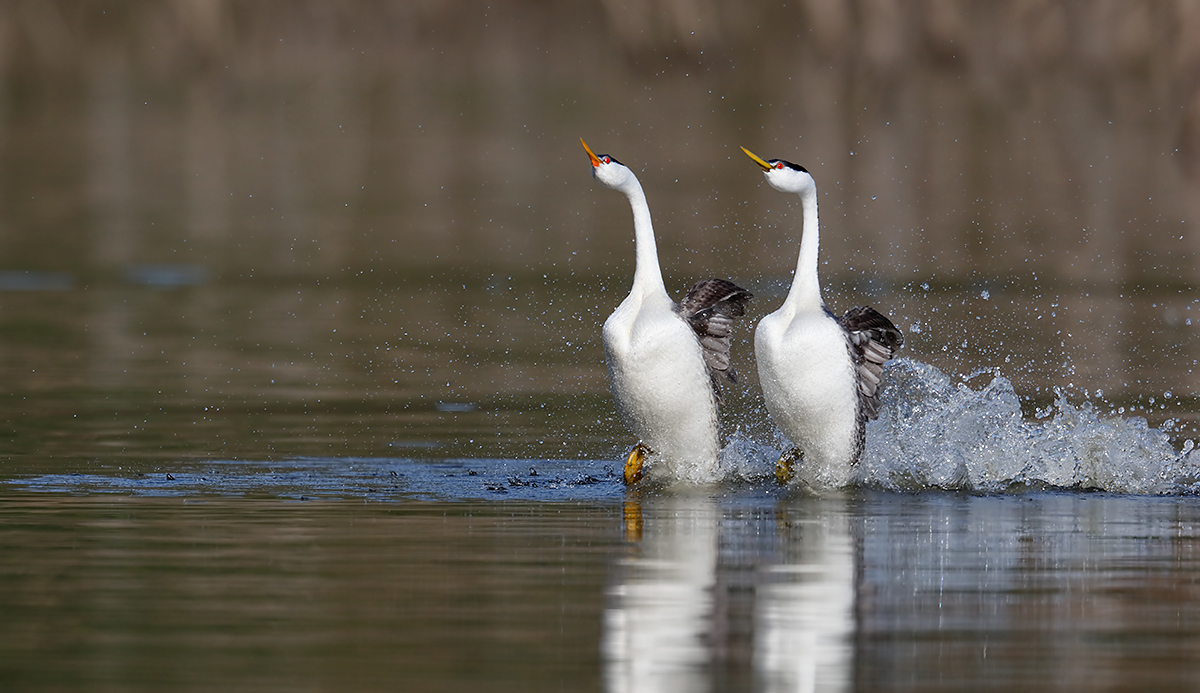
|
|
This image was created in San Diego, CA with the Induro GIT 304L/Mongoose M3.6-mounted Canon EF 500mm f/4L IS II USM lens, the Canon Extender EF 1.4X III, and the simply amazing, astounding, mega mega-pixel Canon EOS 5DS R. ISO 500. Evaluative metering -2/3 stop: 1/2500 sec. at f/6.3 in Av mode. AWB.
61-Point (Automatic selection)/AI Servo/Shutter Button AF as originally framed was active at the moment of exposure (as is always best when photographing moving subjects). Though the optimized image above was a healthy crop from the original the result was a high quality 148+ MB 16-bit file. Click on the image to see a larger version. The AF system selected two AF points, one above the other, between the two birds;the eye of the bird on our right is razor sharp.
Clarke’s X Western Grebe courtship rush
|
The Dancing Grebes Add-On. FRI JAN 25, 2019: $399.
Those registering for the 2019 San Diego IPT might wish to join me for the Dancing Grebe Add-On Morning as above. Please read the details carefully. You will need to wade at least mid-thigh deep with your tripod over an uneven bottom. Lightweight chest waders are advised. Long lenses are needed; a 100-400 will not cut it at this spot, even with a TC. Chances at this location (easily accessible from the IPT hotel), vary from day to day so there will be no guarantees. But when those grebes dance, it can be an amazing rush. We may also enjoy chances to photograph both species, Western and Clarke’s Grebes, at fairly close range.
Help Support the Blog
Please help support my efforts here on the blog by remembering to click on the logo link above each time that you shop Amazon. That would be greatly appreciated. There is no problem using your Prime account; just click on the link and log into your Prime account. With love, artie
If In Doubt …
If in doubt about using the BAA B&H affiliate link correctly, you can always start your search by clicking here. Please note that the tracking is invisible. Web orders only. Please, however, remember to shoot me your receipt via e-mail.




Please Remember to use my Affiliate Links and to Visit the New BAA Online Store 🙂
To show your appreciation for my continuing efforts here, we ask, as always, that you get in the habit of using my B&H affiliate links on the right side of the blog for all of your photo and electronics purchases. Please check the availability of all photographic accessories in the New BIRDS AS ART Online Store, especially the Mongoose M3.6 tripod head, Wimberley lens plates, Delkin flash cards and accessories, and LensCoat stuff.
As always, we sell only what I have used, have tested, and can depend on. We will not sell you junk. We know what you need to make creating great images easy and fun. And please remember that I am always glad to answer your gear questions via e-mail.
I would of course appreciate your using our B&H affiliate links for all of your major gear, video, and electronic purchases. For the photographic stuff mentioned in the paragraph above, and for everything else in the new store, we, meaning BAA, would of course greatly appreciate your business. Here is a huge thank you to the many who have been using our links on a regular basis and those who will be visiting the New BIRDS AS ART Online Store as well.
Facebook
Be sure to like and follow BAA on Facebook by clicking on the logo link upper right. Tanks a stack.
Typos
In all blog posts and Bulletins, feel free to e-mail or to leave a comment regarding any typos or errors. Just be right :).
|
|







